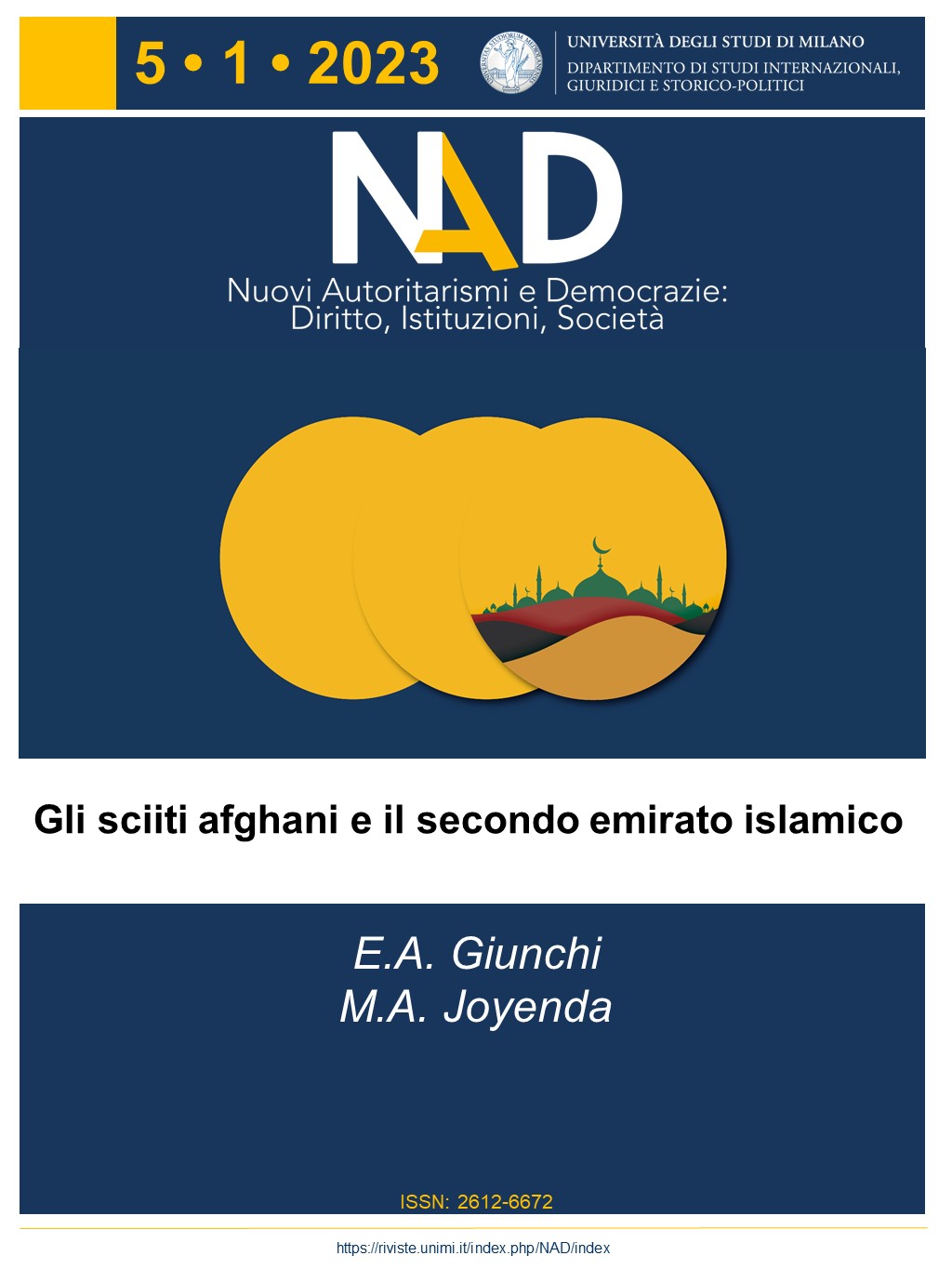The Afghan Shia and the Second Islamic Emirate
DOI:
https://doi.org/10.54103/2612-6672/19958Keywords:
Afghanistan, Shi‘as, Ismailis, TalebanAbstract
After the return to power of the Taliban in August 2021, many analysts wondered if the new Islamic emirate would be different from the one that had controlled much of the country between 1996-2001. The treatment of women since then, which has received extensive coverage, seems to indicate that their ideological stand has not changed. But there is one aspect that has been overlooked and that would help us answer that question: the policies towards the Shi‘a minority. In the paper we will summarize the status of Afghan Shi‘as through the decades and assess whether it has changed over the course of two periods of Taleban rule
References
Y. Baiza, The Hazara of Afghanistan and their Shi‘a Orientation: An Analytical Historical Survey, in Journal of Shi ‘a Islamic Studies, vol. 7, n. 2, 2014
R. Bindemann, The Political reconstruction of Afghanistan. The hazara a hundred years after Abdur Rahman, in M. Centlivres-Demont (Ed.), Afghanistan. Identity, society and politics since 1980, London, I.B. Tauris, 2015
J. Desautels-Stein, Rites and Rights in Afghanistan: The Hazara and the 2004 Constitution,
The Fletcher Forum of World Affairs, vol. 29, n. 1, 2005
N. Green, Afghanistan’s Islam: From conversion to the Taliban, University of California Press, 2016
A. Olesen, Islam and Politics in Afghanistan, Curzon press, 1995

Downloads
Published
License
Copyright (c) 2023 Elisa Ada Giunchi, Mir Ahmad Joyenda

This work is licensed under a Creative Commons Attribution-NonCommercial-NoDerivatives 4.0 International License.









